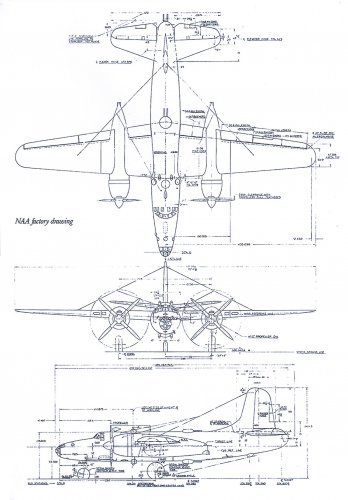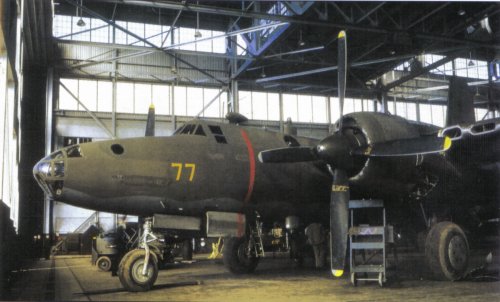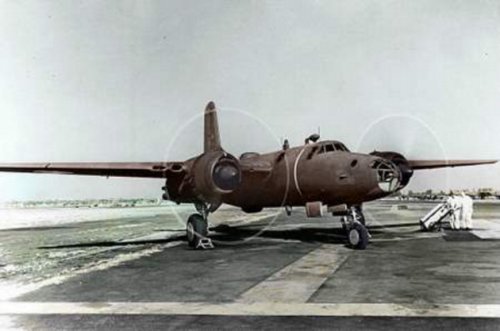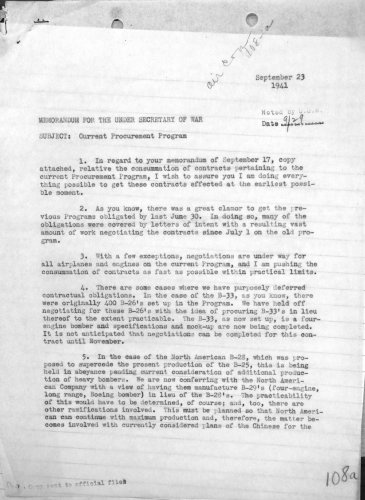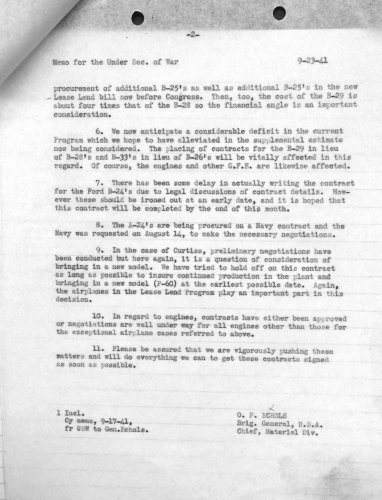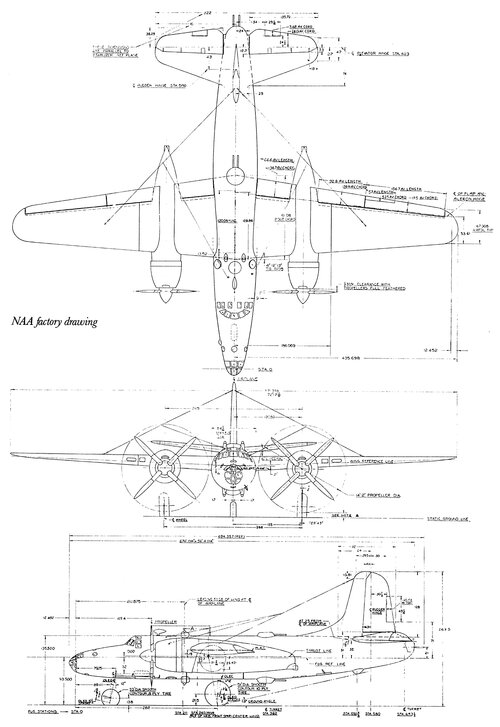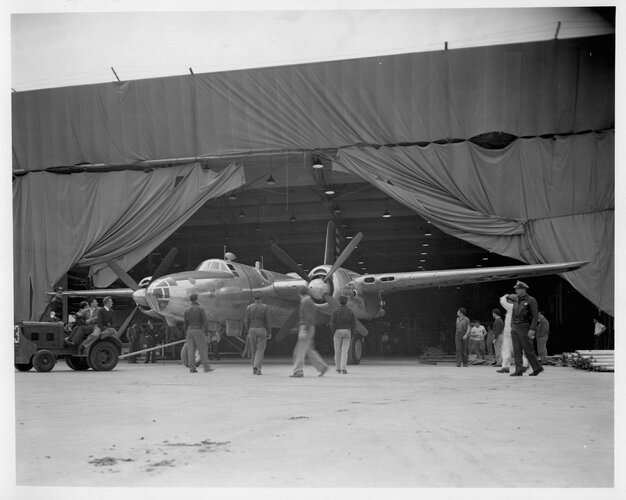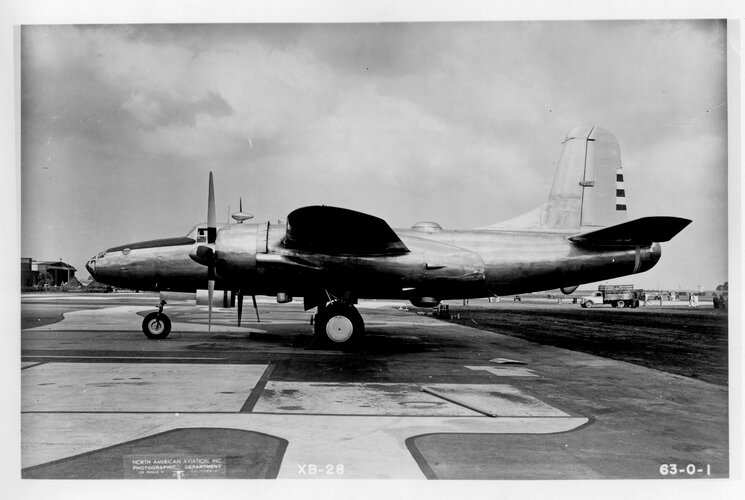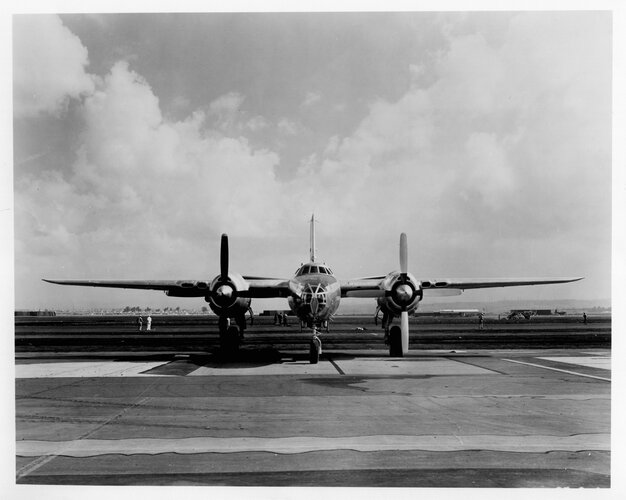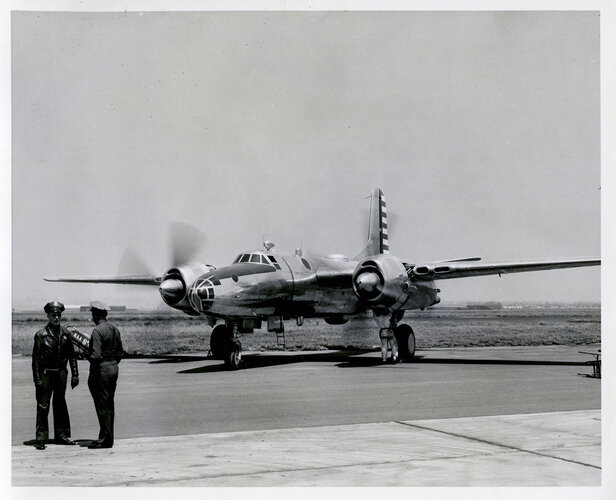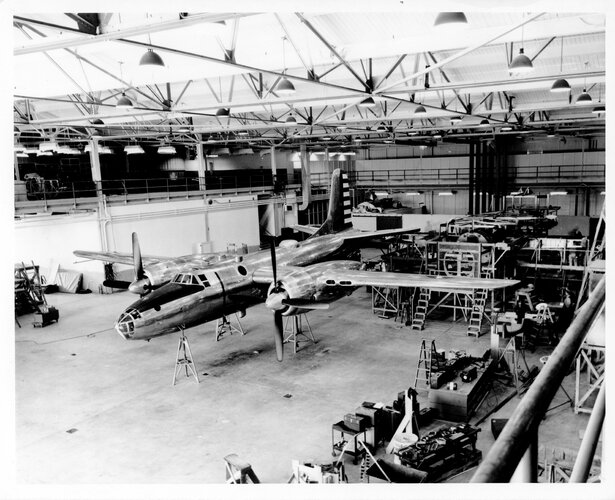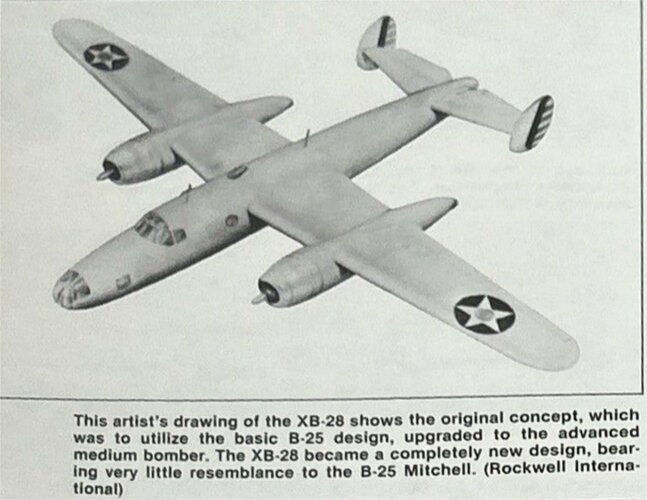You are using an out of date browser. It may not display this or other websites correctly.
You should upgrade or use an alternative browser.
You should upgrade or use an alternative browser.
North American XB-28 and XB-28A
- Thread starter Justo Miranda
- Start date
Sorry ....North American XB-28-NA :-\
saturncanuck
Any landing you can walk away from, is a good one.
Justo Miranda said:Sorry ....North American XB-28-NA :-\
Yup, thats what she is.
Steve Pace
Aviation History Writer
- Joined
- 6 January 2013
- Messages
- 2,266
- Reaction score
- 186
Can't seem to find the first flight date of the XB-28. Help! Steve Pace
Steve Pace
Aviation History Writer
- Joined
- 6 January 2013
- Messages
- 2,266
- Reaction score
- 186
My mistake - I meant for the XB-28A (I had the XB-28) - sorry. -SP
- Joined
- 6 November 2010
- Messages
- 4,407
- Reaction score
- 3,557
XB-28 first flight on April 24, 1942. Crew: Ed Virgin and Joe Barton.
XB-28A first flight on April 24, 1943. Exactly one year later. Same crew.
Source: 'North American Aircraft 1934-1998 - Volume 1' by Norm Avery.
XB-28A first flight on April 24, 1943. Exactly one year later. Same crew.
Source: 'North American Aircraft 1934-1998 - Volume 1' by Norm Avery.
XP67_Moonbat
ACCESS: Top Secret
- Joined
- 16 January 2008
- Messages
- 2,252
- Reaction score
- 402
This thread has a 3-view of the B-28.
Steve Pace
Aviation History Writer
- Joined
- 6 January 2013
- Messages
- 2,266
- Reaction score
- 186
Thanks so much Arjen! SteveArjen said:XB-28 first flight on April 24, 1942. Crew: Ed Virgin and Joe Barton.
XB-28A first flight on April 24, 1943. Exactly one year later. Same crew.
Source: 'North American Aircraft 1934-1998 - Volume 1' by Norm Avery.
spiteful21k
ACCESS: Restricted
- Joined
- 1 March 2008
- Messages
- 5
- Reaction score
- 5
- Joined
- 3 June 2006
- Messages
- 2,888
- Reaction score
- 2,809
Here the interesting article "The North American XB-28: Too Much, Too Late" by our forum member JP Santiago posted at his blog. 
Link: http://www.tailsthroughtime.com/2015/05/the-north-american-xb-28-too-much-too.html
Link: http://www.tailsthroughtime.com/2015/05/the-north-american-xb-28-too-much-too.html
CTI-538 (7 April 1942): "Cancellation of 300 Lockheed Troop Carriers (C-63), and 600 North American B-28 Airplanes, and Procurement of 400 Additional B-25's and 500 Additional P-51's"
Sherman Tank
I don't want to change my personal text
- Joined
- 14 October 2016
- Messages
- 233
- Reaction score
- 203
RyanC said:CTI-538 (7 April 1942): "Cancellation of 300 Lockheed Troop Carriers (C-63), and 600 North American B-28 Airplanes, and Procurement of 400 Additional B-25's and 500 Additional P-51's"
For those playing along at home, C-63 was a convertible bomber/transport—it was the provisional designation for what became the Hudson IIIA in Commonwealth service.
Sherman Tank said:RyanC said:CTI-538 (7 April 1942): "Cancellation of 300 Lockheed Troop Carriers (C-63), and 600 North American B-28 Airplanes, and Procurement of 400 Additional B-25's and 500 Additional P-51's"
For those playing along at home, C-63 was a convertible bomber/transport—it was the provisional designation for what became the Hudson IIIA in Commonwealth service.
Thank you
About 400 B-25 and 500 P-51 which versions are they ?
XP67_Moonbat
ACCESS: Top Secret
- Joined
- 16 January 2008
- Messages
- 2,252
- Reaction score
- 402
I often see the name Dragon associated with the XB-28. But was that ever officially confirmed?
I often see the name Dragon associated with the XB-28. But was that ever officially confirmed?
I know it was a pretty marginal bomber - but that name was already taken by the Douglas B-23 no ?
Geez the US military procurement process is extremely convoluted with rather large dosages of utter stupidity.From the Robert Patterson Files, Box 108 at Library of Congress Manuscript Division.
References NORTH AMERICAN XB-28 / B-28 and MARTIN XB-33 / B-33. [put here for keyword search]
And "fuds" talk about the procurement policies of France, Germany and Japan for example...
Was also provisional designation of A-29ARyanC said:CTI-538 (7 April 1942): "Cancellation of 300 Lockheed Troop Carriers (C-63), and 600 North American B-28 Airplanes, and Procurement of 400 Additional B-25's and 500 Additional P-51's"
For those playing along at home, C-63 was a convertible bomber/transport—it was the provisional designation for what became the Hudson IIIA in Commonwealth service.
Well, in WW2, I doubt that it involved significantly more stupidity than any othe large bureaucratic endeavor.Geez the US military procurement process is extremely convoluted with rather large dosages of utter stupidity.From the Robert Patterson Files, Box 108 at Library of Congress Manuscript Division.
References NORTH AMERICAN XB-28 / B-28 and MARTIN XB-33 / B-33. [put here for keyword search]
And "fuds" talk about the procurement policies of France, Germany and Japan for example...
Remember: the US production effort was [a] very large and distributed across an amazing variety of dissimilar civilian industries, all of which had to be coordinated and directed at one, previously unfamiliar goal, military manufacture. The fact that, in the middle of a huge war, the US had the flexibility to trade B-26s for non-existent B-33s and back again, while trading mediocre B-28 mediums for B-29 heavies is itself evidence of both size and robust organization, if anything. It worked. Mobilization of civilian mass-production capabilities worked so well that waste, indecision, and occasional poor requirements had little or no impact on the outcome of the war.
- Joined
- 13 June 2007
- Messages
- 2,065
- Reaction score
- 2,495
I just scanned these photos of the NAA XB-28 in the Gerry Balzer collection last week.
Enjoy the Day! Mark
Enjoy the Day! Mark
Attachments
- Joined
- 13 June 2007
- Messages
- 2,065
- Reaction score
- 2,495
The amount of excellent aircraft designs produced by the USA in WWII never cease to amaze me. In fact at some point they had too many good planes & prototypes competing with each others. Notably in the twin engine bomber / attack category (the B- & the A-).
- Joined
- 9 October 2009
- Messages
- 20,457
- Reaction score
- 11,195
Scott Kenny
ACCESS: Above Top Secret
- Joined
- 15 May 2023
- Messages
- 7,367
- Reaction score
- 6,941
And the basic prioritization process is still in use today, so it mostly works. Did need some modifications during WW2, however, as the plight of the M7 Medium Tank demonstrated. The factory, despite being scheduled to build a top priority vehicle, was way down the priority list for getting the machine tools to build the tank. That's been fixed now, I believe it was fixed in 1944.Well, in WW2, I doubt that it involved significantly more stupidity than any othe large bureaucratic endeavor.
Remember: the US production effort was [a] very large and distributed across an amazing variety of dissimilar civilian industries, all of which had to be coordinated and directed at one, previously unfamiliar goal, military manufacture. The fact that, in the middle of a huge war, the US had the flexibility to trade B-26s for non-existent B-33s and back again, while trading mediocre B-28 mediums for B-29 heavies is itself evidence of both size and robust organization, if anything. It worked. Mobilization of civilian mass-production capabilities worked so well that waste, indecision, and occasional poor requirements had little or no impact on the outcome of the war.
Similar threads
-
-
P-51 Mustang & F-82 Twin Mustang Proposals and Variants
- Started by GTX
- Replies: 222
-
-
USAAF / USAF November 1945 Light Bomber Competition
- Started by RyanC
- Replies: 13
-
Martin XB-16 and XB-16A bomber projects (Model 145)
- Started by Stargazer
- Replies: 64

